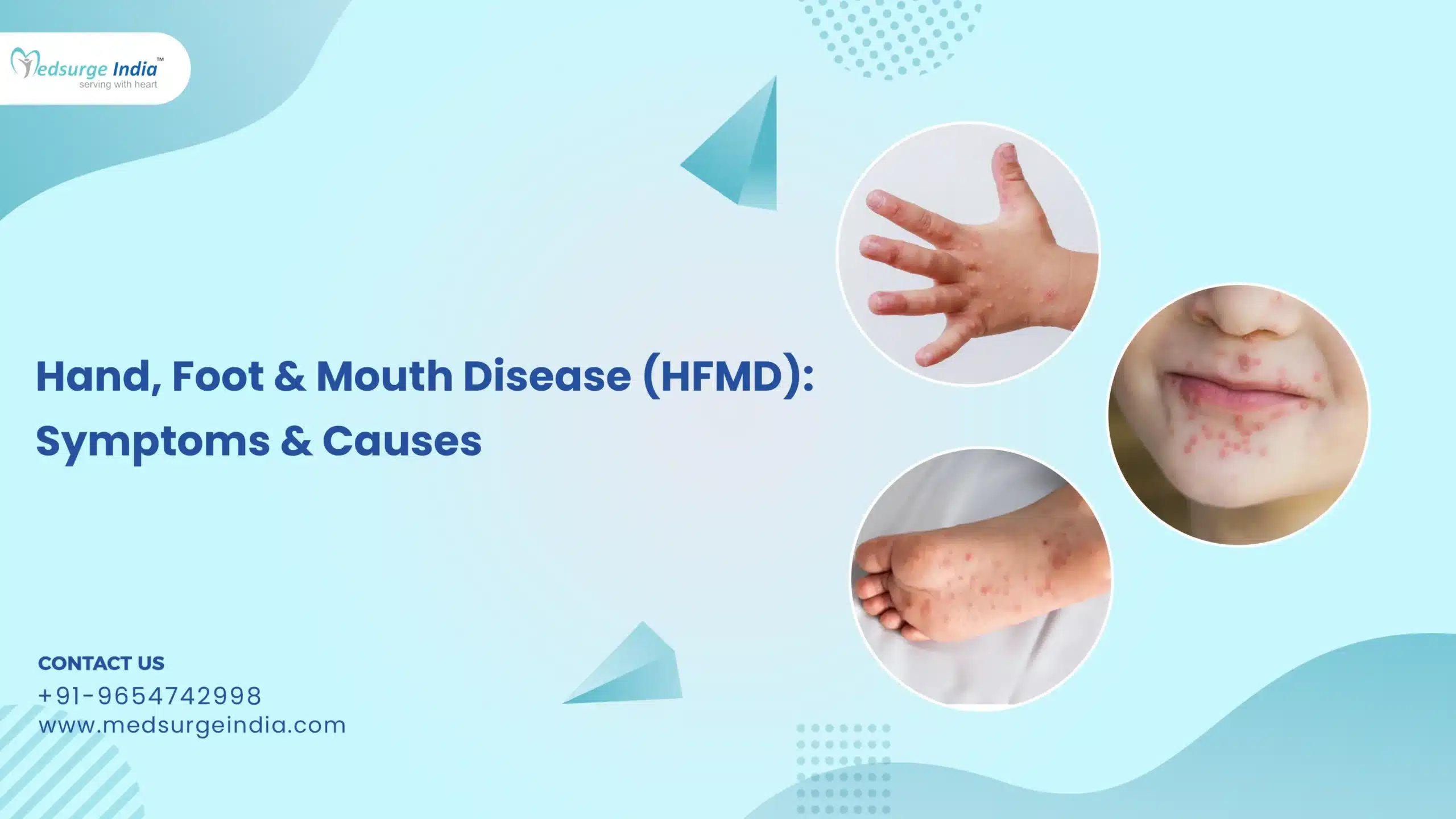
Hand-Foot & Mouth Disease (HFMD): Symptoms & Causes
Hand-foot and mouth disease is a mild viral infection that is contagious and primarily affects young children. The condition is characterized by sores in the mouth and a rash on the hands and feet. It is most often caused by a coxsackievirus.
There is no specific treatment available for hand-foot and mouth disease. To reduce the risk of infection, it is advisable to practice regular hand-washing and to limit close contact with individuals who are infected with the disease.
What is Hand-Foot and Mouth Disease?
Hand-foot, and mouth disease (HFMD) is a prevalent viral infection primarily affecting children under five years old, although adolescents and adults can also contract the virus. Outbreaks are most frequently observed during the summer and autumn months.
HFMD is highly contagious and can be transmitted easily between individuals. The virus can spread through several means, including:
- Inhaling respiratory droplets from an infected individual when within three feet.
- Contacting surfaces contaminated with respiratory secretions or saliva.
- Engaging in close physical interactions, such as kissing, hugging, or sharing utensils with someone who is infected.
- Handling fecal matter from an infected person, which may occur when changing a diaper and subsequently touching the eyes, mouth, or nose.
- Coming into contact with fluid from the blisters of an infected individual.
What are its Symptoms?
Hand-foot and mouth disease generally manifests in two distinct phases. Initially, your child may exhibit flu-like symptoms, which can include:
- Mild fever
- Sore throat
- Runny nose
- Stomach discomfort
- Decreased in appetite.
After a few days, these initial symptoms typically subside, giving way to new signs, such as:
- An itchy rash appears on the palms of the hands, soles of the feet, elbows, knees, genitals, or buttocks
- Painful sores in the mouth, which can occur anywhere inside or around the mouth, including the tongue. These sores often begin as bright pink spots or small bumps that progress to blisters
- Swollen lymph nodes in the neck.
The symptoms of hand-foot and mouth disease usually resolve within seven to ten days. However, it may take longer for children under the age of two to fully eliminate the virus from their systems.
How is it Caused?
The primary cause of hand-foot and mouth disease is an infection known as coxsackievirus 16, which is part of a category of viruses known as nonpolio enteroviruses. Additionally, other enterovirus types can also lead to the development of hand-foot and mouth disease.
Transmission of the coxsackievirus, and consequently hand-foot and mouth disease, typically occurs through oral contact. The disease is spread through direct person-to-person interaction with an infected individual.
How is it Treated?
A healthcare professional can identify hand-foot and mouth disease by examining the blisters on your child’s skin. In some cases, they may conduct tests for the virus by collecting throat swab samples or samples from blisters or stools and sending them to a laboratory.
Management and Treatment of Hand-Foot and Mouth Disease
There is no specific medication available for hand-foot and mouth disease, as antibiotics are ineffective against viral infections. Fortunately, the symptoms of HFMD are generally mild, and most individuals recover within one to two weeks with basic home care. Treatment options for hand-foot and mouth disease may include:
- Over-the-counter pain relievers for fever and discomfort, such as acetaminophen (Tylenol®) and ibuprofen (Advil®, Motrin®). Aspirin should be avoided in children due to the risk of Reye’s syndrome.
- Older children may find relief by gargling with salt water to alleviate sore throat discomfort.
- Adults can utilize numbing sprays or mouthwashes to ease pain.
Additional recommendations for home care include:
- Steering clear of spicy or acidic foods that could exacerbate mouth sores.
- Consuming cold beverages, such as warm or hot drinks may intensify mouth pain.
- Ensuring your child stays hydrated with cold liquids or ice pops.
How to Prevent Hand-Food and Mouth Disease?
There is currently no vaccine available to prevent hand-foot and mouth disease (HFMD). The virus is most contagious during the initial week of illness. It can remain in the body for several weeks after your child has recovered, continuing to pose a risk of transmission to others. To help prevent the spread of HFMD:
Instruct your child to:
- Refrain from touching the rash or rubbing their eyes.
- Avoid placing fingers or toys in their mouth.
- Cough or sneeze into a tissue or the crook of their elbow.
- Frequently wash their hands with soap and warm water, especially after touching the rash, using the restroom, before handling food, before eating, and after interacting with animals.
- Ensure you also wash your hands regularly with soap and warm water.
- Thoroughly disinfect bathrooms, toys, and other surfaces that your child frequently touches using soap and water or disinfectants such as Lysol® or Clorox®. The virus can survive on these surfaces for several days.
- Do not share personal items such as drinking cups, eating utensils, toothbrushes, napkins, combs, or towels.
- Limit close contact, including hugging or kissing, with any child who is infected.
Bottom Line
Symptoms of hand-foot and mouth disease are generally mild and typically resolve with minimal treatment within a two-week period. Given the highly contagious nature of the virus, it is crucial to maintain good hygiene practices and implement measures to prevent its spread to others. Your child’s healthcare provider can provide recommendations for alleviating symptoms and offer guidance on how to protect others from infection.






